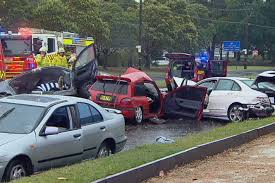Legal Elements
Foreseeability in a Personal Injury Case
San Antonio Personal Injury Lawyers » Foreseeability in a Personal Injury Case
What is Foreseeability, and How Does it Affect my Personal Injury Case?
Foreseeability is a prerequisite for determining if someone acted negligently. To prove that someone acted negligently you must prove that there was a duty of care, that duty was breached, these actions caused the injury, and that the victim suffered actual damages. The concept of foreseeability is utilized in determining duty of care, breach, and causation. Consequently, foreseeability is basically the foundation for negligence claims. Foreseeability involves knowing that the act or failure to act presented a danger to others. Being able to foresee something is essentially being able to reasonably predict or know in advance that something would happen. Therefore, foreseeability is being able to reasonably predict or know beforehand that your action or inaction would or could cause another person harm.
How Does Foreseeability Affect Duty of Care?
A person is only responsible for your injuries if they first had a duty of care. The court must first determine whether or not the defendant even owed any duty of care. If they rule that they did owe you a duty of care, they are faced with deeper queries. They then must define the scope of that duty of care. For example, if you are swimming at the beach and you begin to drown, the lifeguard has a required duty to protect you. But how far must he go to make sure that you do not die? Does he only have to pull you out of the water and remove you from that danger, or is he required to perform CPR if you aren’t breathing? Furthermore, if he has already warned you about the danger of the tide, does he have any responsibility to rescue you from the waves? The lifeguard clearly has a duty to protect you, but the extent of that duty as defined by the courts becomes crucial to the overall liability of the lifeguard.
What Affect Does Foreseeability Have When Determining Whether A Breach Occurred?
When determining whether a duty was breached you do not question whether the actual harm caused was foreseeable; rather, you examine the foreseeable likelihood and severity of injuries that their actions might have caused. The purpose is to determine what extent of foreseeable risk the breach might produce. For example, say you and your friend have drinks together at a bar. When you are finished, you both leave the bar and drive home in your separate cars. Too intoxicated to drive, you accidentally back into a parked car while attempting to leave the parking lot. You have clearly caused damage to the other person’s car and are liable. But now consider your friend. Also too intoxicated to drive, your friend is involved in an accident while driving home. Unfortunately, your friend hit and killed a pedestrian who was crossing the street. Although you and your friend caused different amounts of damage (yours being a scuffed bumper and your friend’s being death), you both are equally negligent under the doctrine of foreseeability. Your negligence is equal because since your actions were identical (driving while intoxicated), you both produced the same foreseeable risks. Even though you both caused different amounts of damage, you both also breached the same duty of care and are equally negligent.
How Does Foreseeability Affect The Determination of Causation?
After the court decides that a person owed a duty of care and that duty was breached, it must then conclude whether that breach was the actual cause of the damage. Causation is based on the connection between the defendant’s wrongful act and the injury sustained as a result. This third element of negligence limits the defendant’s liability to only harm that it could have reasonably foreseen. The defendant cannot be liable for any harm that occurred that the court deems to be outside the realm of foreseeable harm.
Texas courts impose this limit of liability so as to protect the defendant from unjust or outrageous punishment. For example, say I work at a car wash and you bring your car to have it cleaned. After washing it, I move your car to a remote area of the parking lot, leave the keys in the ignition, and then it is stolen. By parking it in a remote area of the parking lot and leaving the keys in the ignition the risk of it being stolen was foreseeable. However, consider this alternate situation. After washing your car, I move it to a remote area of the parking lot, and after walking away the car is suddenly hit by an asteroid. This harm is absolutely not foreseeable and it would not be considered just to hold me accountable for your loss. When you decide where to park your car your concern is for the prevention of theft or from other cars hitting it. Being hit by an asteroid is not within the foreseeable risk of harm.
Our Lawyers have a vast knowledge of website
